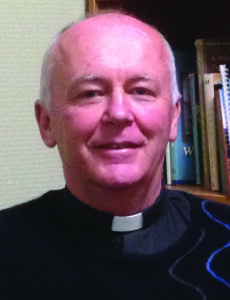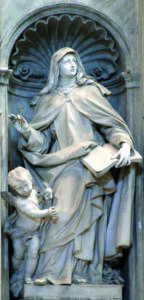The Interior Castle of St Teresa of Jesus of Ávila
Part 7 of 7
We now arrive at the heart of the Castle, or rather, we are admitted into the inner room, the presence chamber, to the spiritual marriage with Christ. The Lord and the soul are at peace and in profound union. I have visited the huge palace of Escorial outside Madrid and have seen the inner beautiful rooms of the King. So, the soul now lives in the presence of God. It is connatural, as if now the soul has found what it was looking for and wants no more. It is a wordless and direct communication with God. Hence it is secure. God is so close. St Teresa asks what more can be written, but then she wisely writes, “Since the greatness of God is without limits, his works are too.”
God takes great delight in us. So, his gifts continue in this Mansion. The saint warns us “Not to impede your Spouse’s celebration of the spiritual marriage with your souls.” She does, however, look back and asks us to pray for those trapped in mortal sin, and so denied the joy of the later Mansions. It is all gift.
As she begins writing about the Seventh Mansion in 1577, having received the spiritual marriage in 1572, St Teresa has had some time to reflect and ponder on the depths of God’s favours. She is even more humbled to dare to write of such wonders: “Surely such a miserable creature as myself should tremble at the thought of speaking on a subject so far beyond anything I deserve to understand.”
The good desires God planted in our hearts are bearing fruit and thanks to God’s goodness we are one with him -- like rain falling into a river, all water. In this Mansion there is a sense of peace, rest and completion -- as C S Lewis writes, “hell is noise.” There is a deep and grateful silence. Hence the difficulty of describing this Mansion, about which St Teresa writes four chapters.
There is a big difference between the Sixth Mansion and the Seventh Mansion. Now, the soul is married, not just engaged. It has the Trinity dwelling within it. The Lord joins the soul to himself. He first brings it into his dwelling place. The Lord removes the scales from its eyes and lets it see and understand, like “a cloud of magnificent splendour.” Here all three Persons communicate themselves to it, speak to it. This entry into the Triune life is a unique feature of St Teresa’s doctrine. The soul truly knows God as he is -- “It perceives this divine company.”
Yet, in a paradox, this new knowledge does not remove it from this world but makes it more occupied with the things of God. St Teresa never rested.
The time of writing The Interior Castle has been called the most difficult time in her life. She continued founding convents -- she was a good cook! -- meeting wonderful people and friends, dealing with many bitter trials and tribulations in relation to the work of the Reform of Carmel. Her profound inner peace gives more energy for God and others.
When the soul first enters the Seventh Mansion, the Lord appears in shining splendour, beauty and majesty, so the soul may realise what new reality has happened and so be very grateful. The soul treasures this deep new vision of glory shining on the face of Christ – “There is a Sun in the interior of the soul from which a brilliant light proceeds.” The person is not self-satisfied at where God has placed him / her, but is conscious of the need to never offend God “guarding itself from any small offence against God.”
God gives the soul forgetfulness of self as it focuses on God and God’s will. The soul has a great desire to suffer if God wishes – “they desire to live very many years suffering the greatest trials if through these they can help the Lord be praised … we have always seen that those closest to Our Lord were those with the greatest trials” -- and yet is full of interior joy. Why? Because they think now like Christ.
![]() She is full of compassion for those who persecute her, and St Teresa frequently knew that trial first hand. There is no more dryness or interior disturbance- so close is God always.
She is full of compassion for those who persecute her, and St Teresa frequently knew that trial first hand. There is no more dryness or interior disturbance- so close is God always.
There are no more raptures, which were formerly sometimes signs of weakness at dealing with the greatness of God. Now there is only deep peace and serenity. The soul is at home with God who has fortified and strengthened it “to especially produce good works… it should think little of itself.”
St Teresa ends her great inspired work: “Although no more than seven dwelling places were discussed, in each of these there are many others below and above and to the sides … such delightful things that you would want to be dissolved in praises of the great God who created the soul in his own image and likeness.”
St Teresa of Jesus, pray for us.


 Entries(RSS)
Entries(RSS)